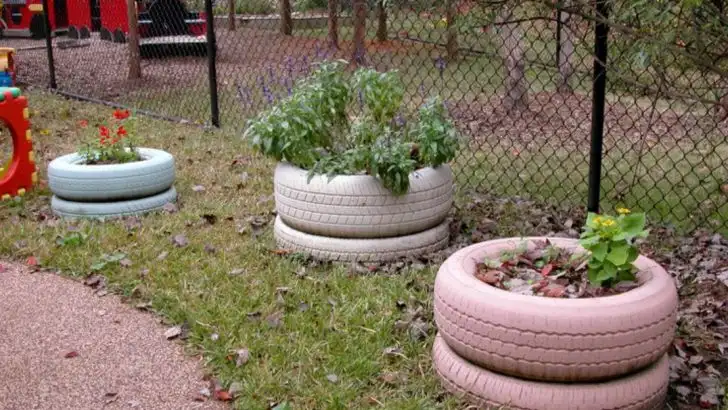Creating a beautiful garden doesn’t have to be expensive or wasteful! By incorporating recycled materials into your garden design, you can add creativity, functionality, and sustainability to your outdoor space while reducing waste and environmental impact.
From repurposed wood and old tires to glass bottles and broken pots, there are endless ways to turn discarded items into charming garden features. Whether you want to build eco-friendly planters, unique pathways, or decorative accents, using recycled materials can help you craft a one-of-a-kind garden with minimal cost and maximum creativity.
In this article, we’ll explore 17 clever ways to use recycled materials in your garden, proving that sustainability and style can go hand in hand.
Tire Planters
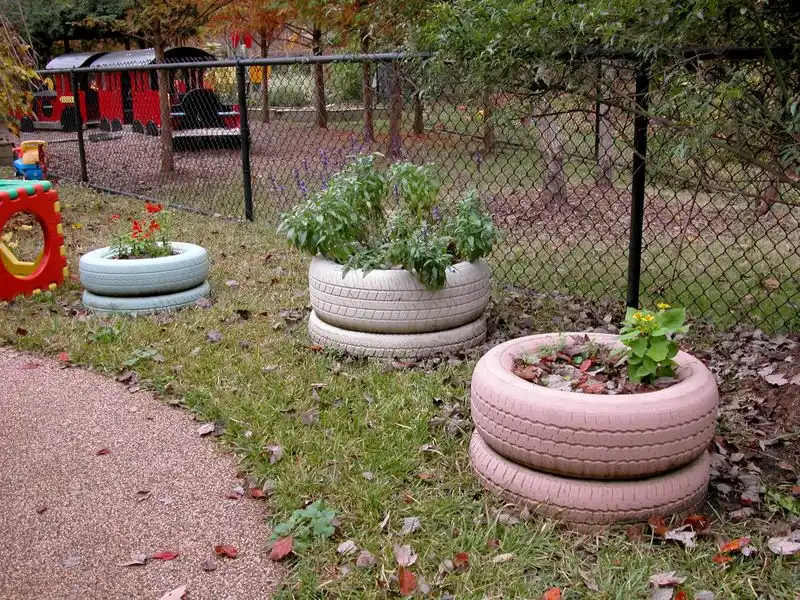
Why let old tires gather dust when they can become vibrant planters? Paint them in lively colors and stack them to create eye-catching vertical gardens. Depending on the space, you can hang them on walls or arrange them in clusters on the ground. Not only do they add a pop of color, but they’re also incredibly durable, holding up against harsh weather conditions. Mix and match different sizes for an eclectic arrangement. This not only adds structure but also provides a creative way to recycle something that’s notoriously hard to dispose of.
Glass Bottle Edging
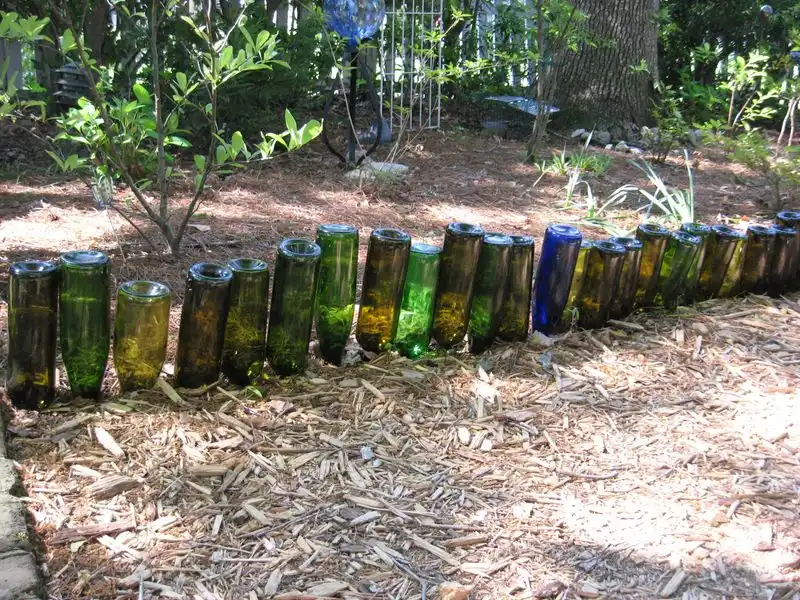
Glass bottles can transform an ordinary garden path into something extraordinary. Use them as a border for flower beds or walkways, placing them upside down to create a stunning visual effect. The variety of colors and shapes available means endless possibilities for customization. This technique not only provides a practical edging solution but also sparkles in sunlight, creating a magical ambiance. Collecting bottles is a fun way to involve friends and family in the project. This is a practical, aesthetically pleasing choice for any garden.
Pallet Compost Bin
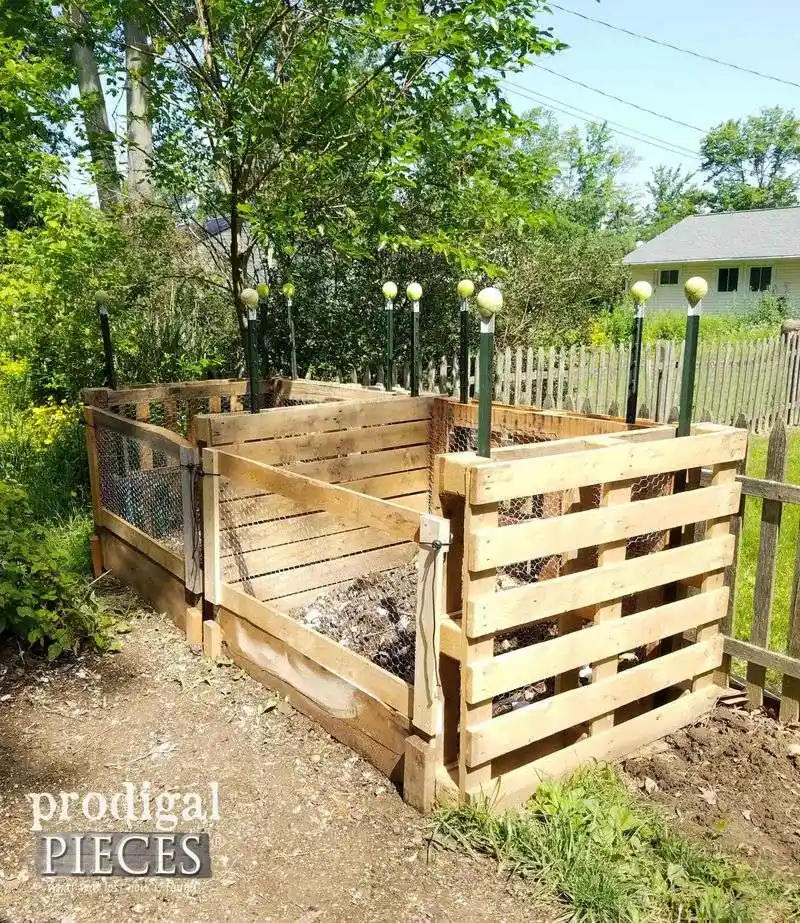
Transform wooden pallets into a practical compost bin, turning kitchen scraps into nutrient-rich compost for your garden. This method is not only cost-effective but also environmentally friendly, as it repurposes materials that might otherwise be discarded. Arrange the pallets into a square or rectangular shape, leaving one side open for easy access. This DIY project is both simple and rewarding, reducing waste while enhancing soil quality. A pallet compost bin is perfect for gardeners looking to minimize their carbon footprint while nurturing their plants.
Broken Pottery Mosaic
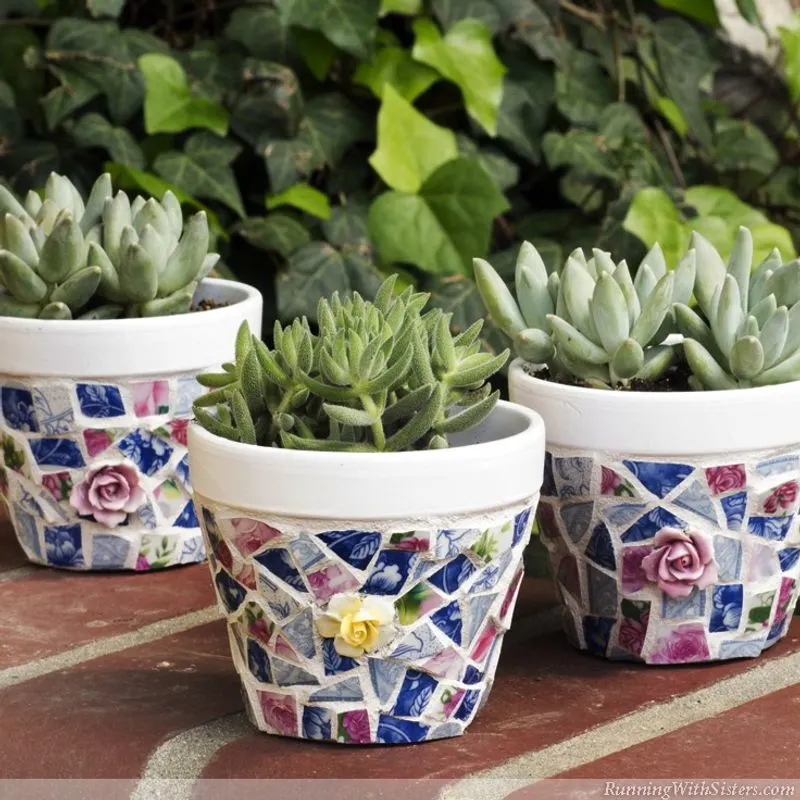
Broken pottery pieces shouldn’t end up in the trash. Instead, use them to create stunning mosaics for garden paths or stepping stones. The variety of colors and textures available in pottery shards offers endless design possibilities. Lay them out in intricate patterns, adhering the pieces with outdoor adhesive. This project adds a personal touch to your garden, turning what was once broken into beautiful art. It’s an ideal way to recycle old items while enhancing the aesthetic appeal of your outdoor space.
Plastic Bottle Drip Irrigation
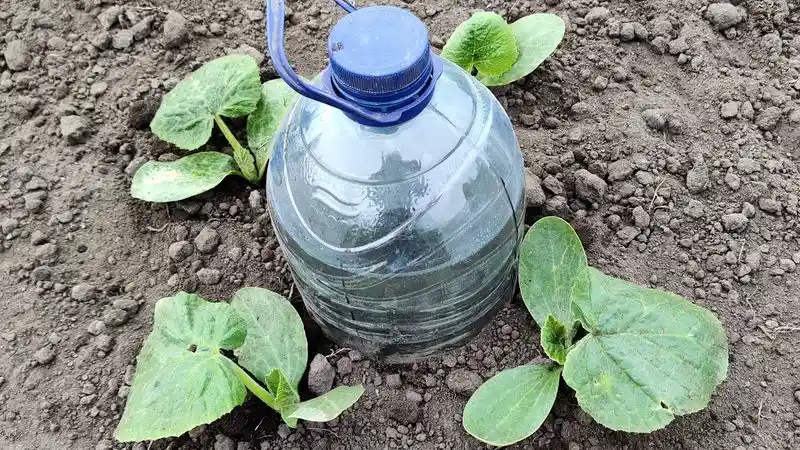
Plastic bottles, often seen as waste, can find new life as a drip irrigation system for your plants. Fill them with water, pierce tiny holes, and place them near the roots. This setup ensures a slow and steady water supply, ideal for plants that require consistent moisture. The method is both economical and efficient, reducing water waste while keeping your garden healthy. It’s particularly useful in areas prone to drought. This clever hack makes it easy to maintain lush greenery without frequent watering.
CD Reflective Bird Deterrents
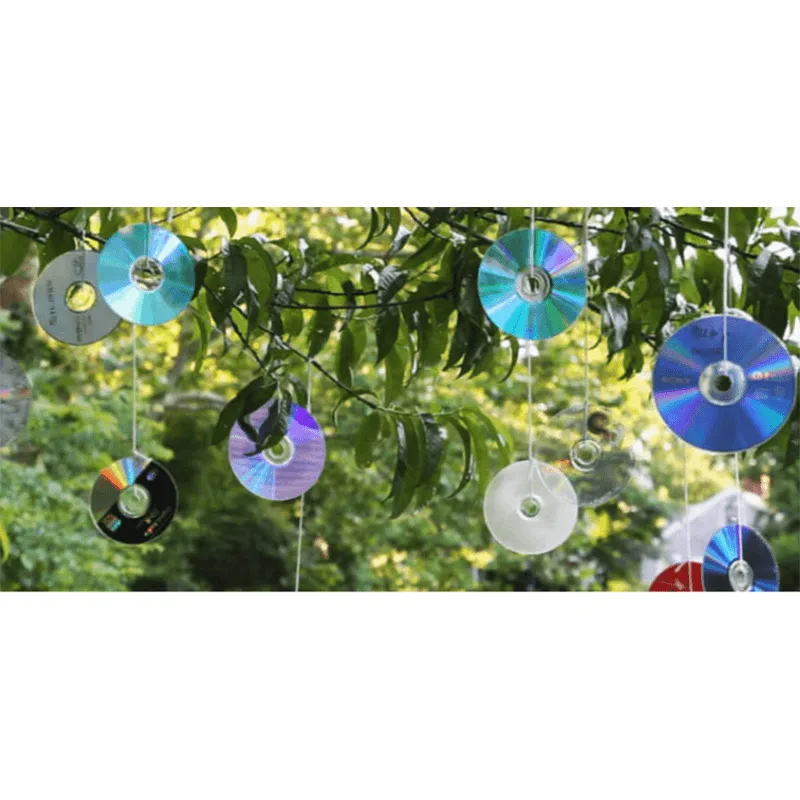
Old CDs can be repurposed into reflective bird deterrents. Hang them in strategic spots around the garden where birds tend to gather. As they spin in the breeze, they reflect sunlight, creating flashes that discourage birds from settling. This method offers a humane and cost-effective solution to protect your plants. Plus, the CDs add a whimsical, shimmering touch to your garden. This approach not only preserves your produce but also adds an unexpected decorative element to your outdoor space.
Wine Cork Plant Markers
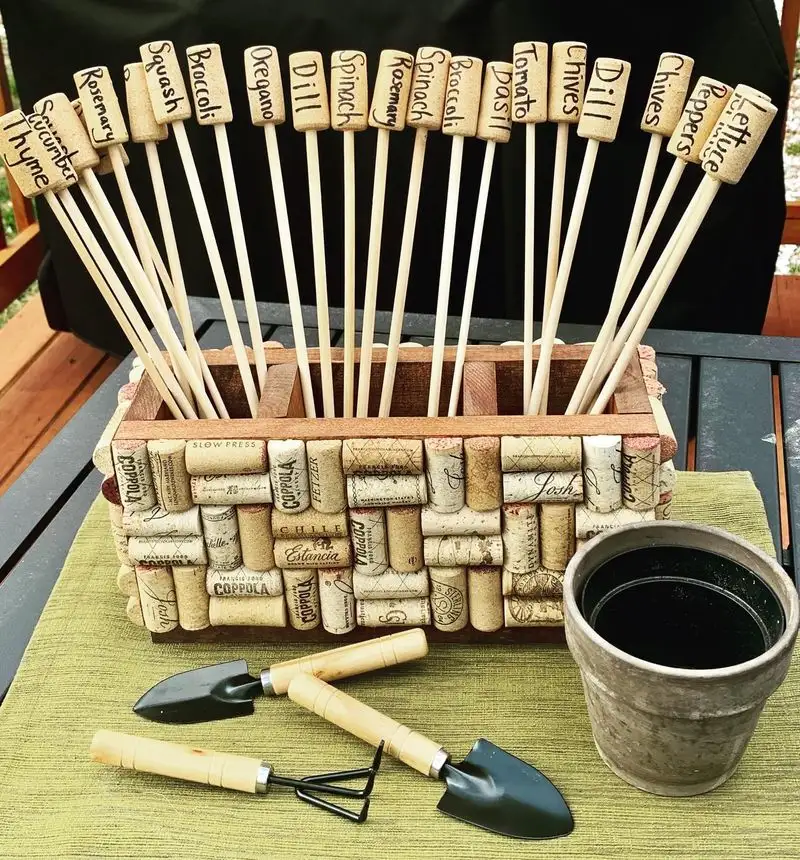
Wine corks can find a second life as plant markers. Attach them to sticks or skewers and use a waterproof marker to label each plant. This practical solution keeps your garden organized and adds a rustic charm. It’s a great way to recycle materials while creating something useful. Collecting corks from friends or wine nights adds a personal story to each marker. Your garden benefits from clear labeling, and you enjoy a simple yet effective DIY project.
Tin Can Lanterns
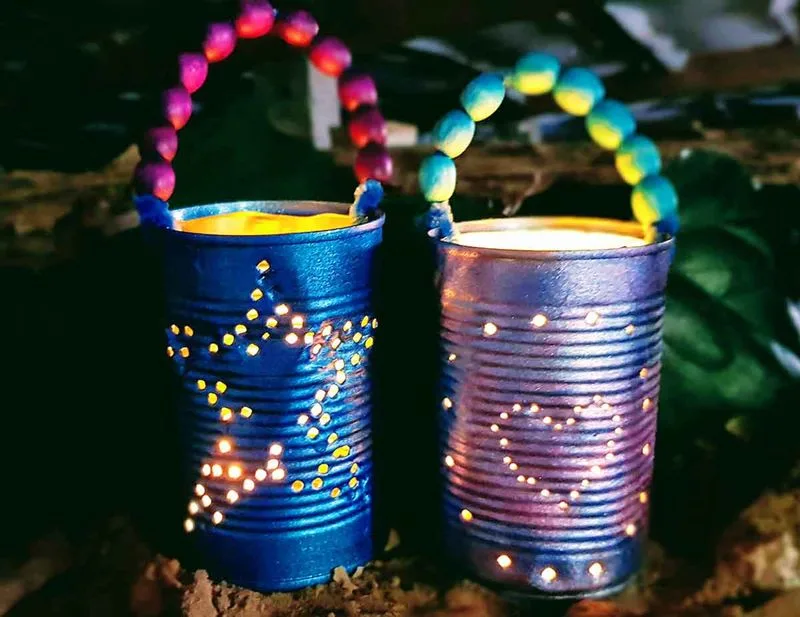
Tin cans can be transformed into charming lanterns. Punch holes in them to create patterns, then place candles inside to illuminate your garden. This is an easy way to add ambiance without spending a fortune. The soft glow from the candles dances through the perforations, creating a cozy atmosphere. Whether hung from trees or placed on tables, these lanterns are sure to impress. Reusing tin cans is not only eco-friendly but also a delightful craft project that enhances your outdoor décor.
Wooden Crate Shelving
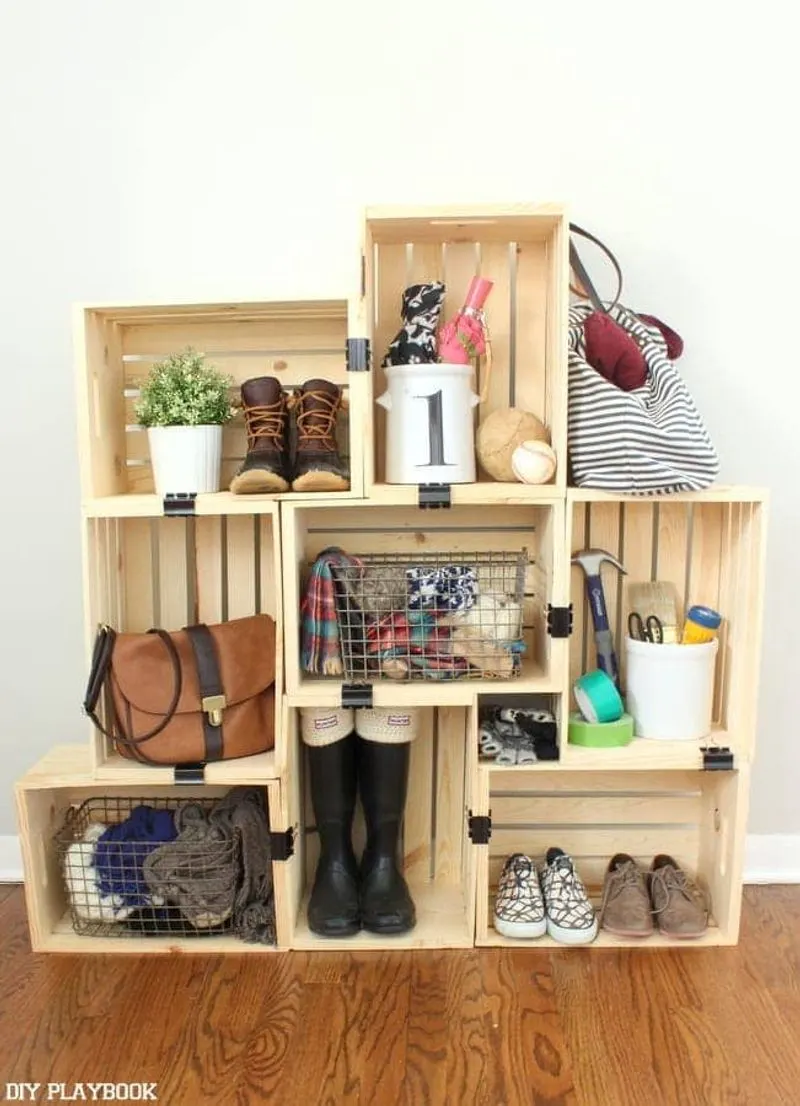
Wooden crates offer a versatile storage solution for your garden. Stack them to create makeshift shelves for potted plants, tools, or decorative items. This idea combines functionality with a rustic aesthetic, making it a great addition to gardens of all sizes. Crates can be painted or left natural, depending on your style preference. They provide ample storage while keeping everything within easy reach. This approach is perfect for gardeners looking to organize their space creatively and sustainably.
Old Ladder Trellis
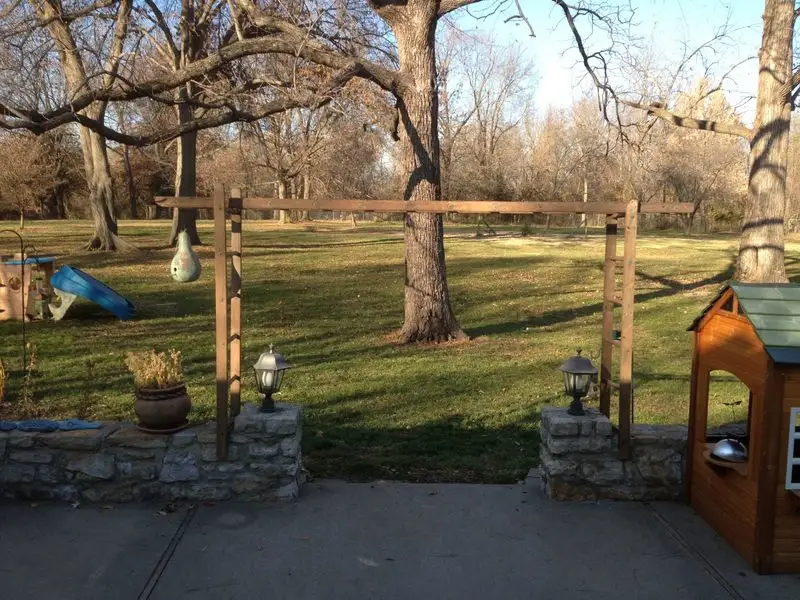
An old ladder can be transformed into a sturdy trellis for climbing plants. Its rungs provide perfect support for vines, turning a simple structure into a focal point. Position it against a wall or in a garden bed to maximize vertical space. This is especially useful for small gardens where space is at a premium. The ladder adds height and interest, encouraging plants to grow upward. This inventive use of a common item helps structure your garden beautifully.
Basket Shade Covers
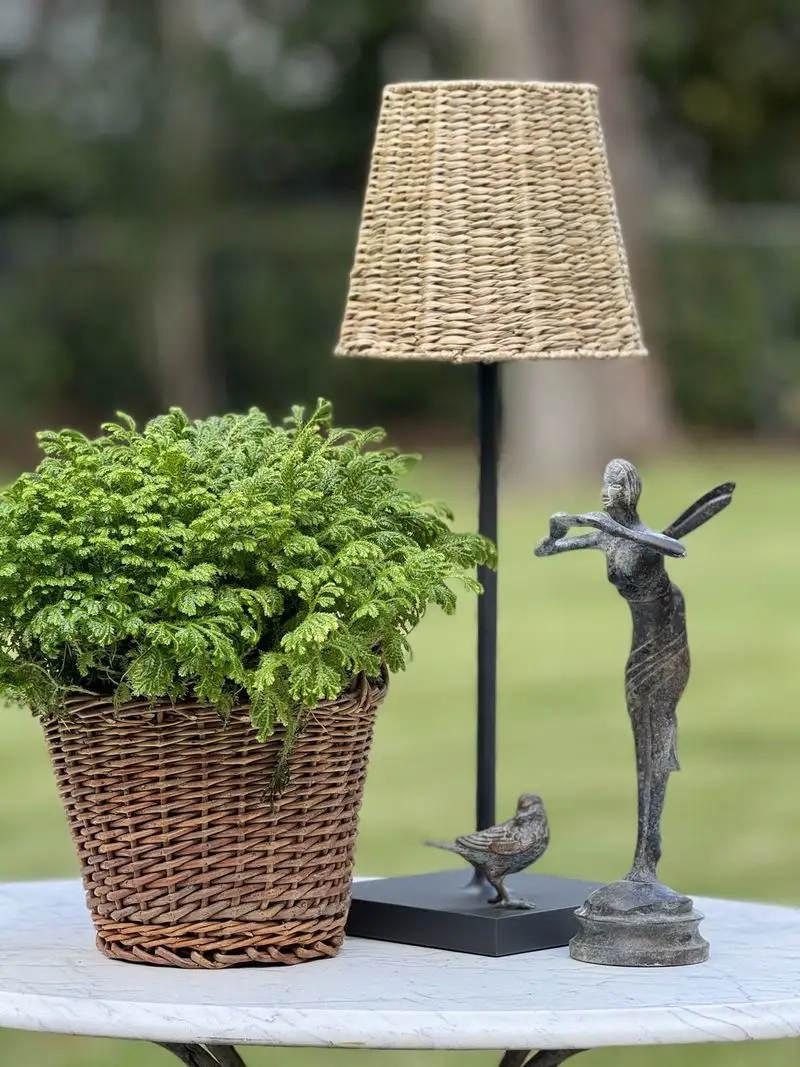
Wicker baskets can double as shade covers for delicate plants, protecting them from harsh sun. By turning them upside down, they provide just enough cover to prevent scorching. This simple solution is ideal for seedlings or shade-loving plants. The baskets add a quaint, vintage touch to your garden while serving a practical purpose. As they’re easy to move, you can adjust their placement as needed. This unique idea combines aesthetics with functionality, showcasing your creativity in garden care.
Concrete Block Planters

Concrete blocks, often overlooked, can be stylish planters for succulents or small flowers. Their clean lines and neutral color offer a modern aesthetic, perfect for contemporary gardens. Stack them in various configurations to create tiered arrangements or use them individually for a minimalist look. Their weight ensures stability, making them ideal for windy areas. These planters require minimal maintenance, blending effortlessly into any garden style. This is an excellent way to incorporate industrial materials into a natural setting.
Bathtub Pond
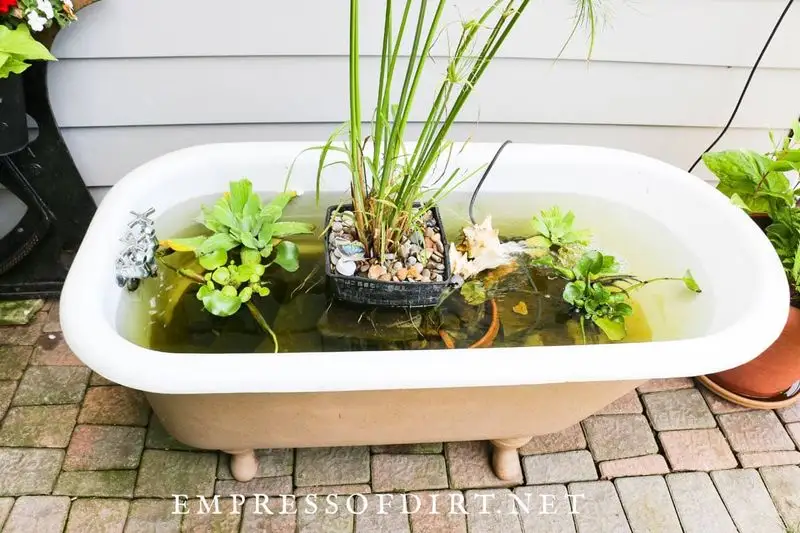
An old bathtub can become a charming pond, adding a water feature without extensive digging. Fill it with aquatic plants and even a few goldfish for a tranquil garden spot. The bathtub’s structure provides a ready-made container, simplifying the process. This feature attracts wildlife and offers a unique focal point for your space. With a bit of creativity, plumbing fixtures can be repurposed to create a delightful oasis. This idea marries practicality with whimsy, enhancing your garden’s biodiversity.
Brick Pathway Reclaimed

Old bricks can be reclaimed to create charming garden pathways. Their durability makes them perfect for high-traffic areas, while their weathered look adds character. Arrange them in herringbone or basketweave patterns for visual interest. This project is both cost-effective and environmentally friendly, reusing materials often discarded. Laying a brick path requires minimal tools and offers a sense of accomplishment. This approach enhances your garden’s accessibility and aesthetic, providing a rustic charm that never goes out of style.
Cinder Block Bench
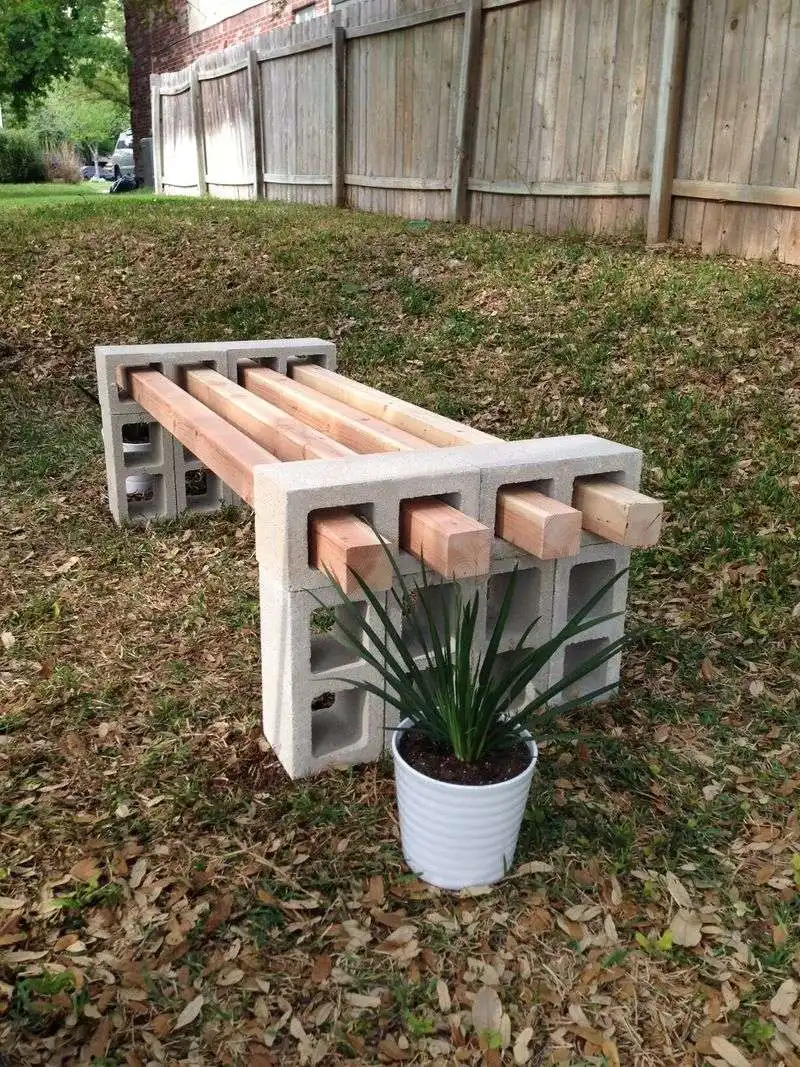
Cinder blocks can be stacked to create a sturdy, functional bench. Top with a wooden plank for a comfortable seat, perfect for garden relaxation. The industrial look of cinder blocks contrasts beautifully with natural surroundings. This project is simple to assemble and requires minimal tools, making it accessible for any DIY enthusiast. The bench can be customized by painting or adding cushions for extra comfort. This idea combines practicality with a modern aesthetic, offering a durable seating solution for your garden.
Old Window Cold Frame
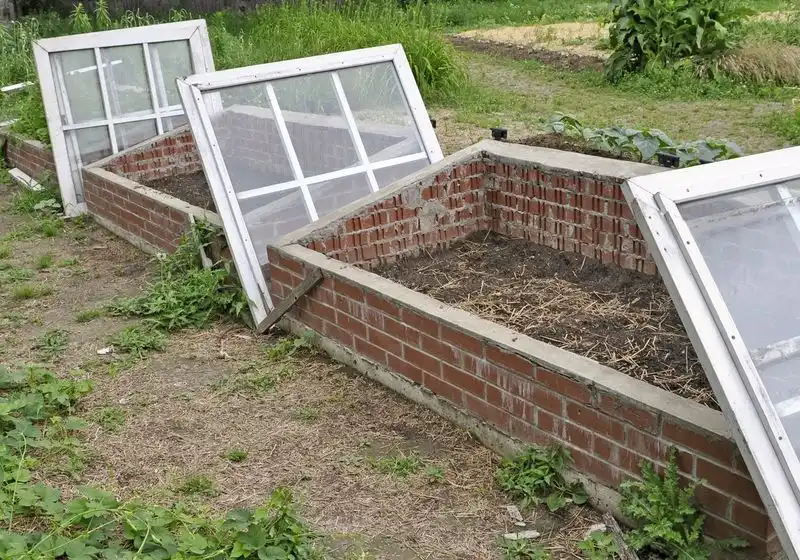
Old windows can be repurposed into cold frames, extending your gardening season. By creating a small greenhouse effect, they protect tender plants from frost. Simply hinge the window to a wooden box and place over your garden bed. This is an economical way to recycle windows while benefiting your plants. Adjust the window to control temperature and ventilation. This clever use of materials helps you grow a wider variety of plants throughout the year. It’s an innovative solution for dedicated gardeners.
Shoe Organizer Vertical Garden
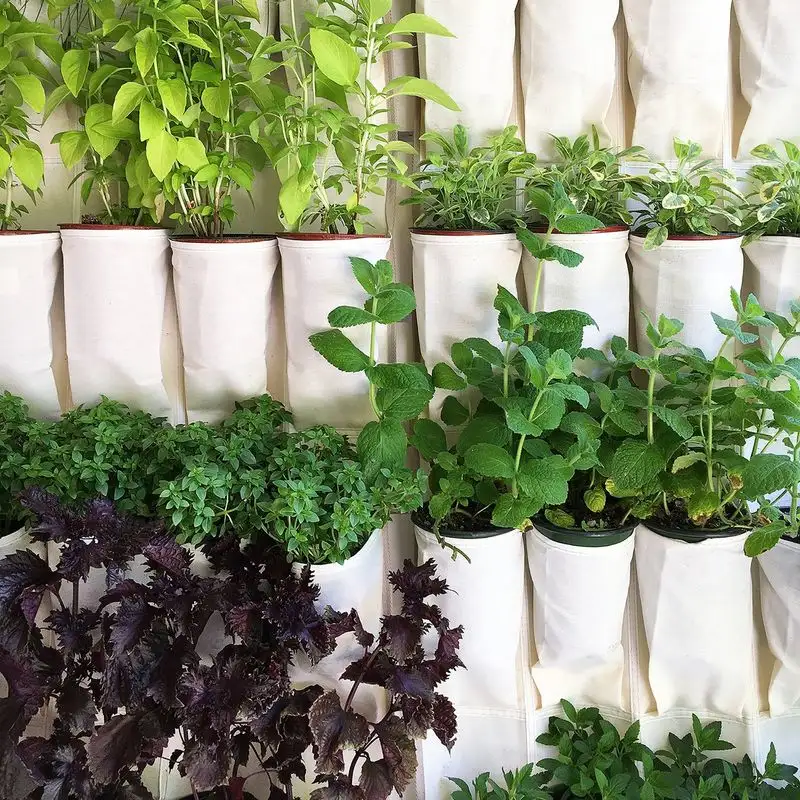
An old shoe organizer can be transformed into a vibrant vertical garden. Hang it on a fence or wall, and fill the pockets with soil and plants. This method is perfect for maximizing space, especially in urban gardens. The pockets are ideal for herbs and small flowers, creating a living wall that’s both practical and decorative. Watering is simplified, as the fabric allows for proper drainage. This idea is perfect for gardeners looking to innovate with limited space, turning walls into lush greenery.

